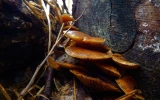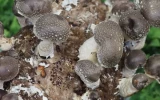Easy Shiitake Mushroom Substrate Recipe to Make At Home
Most people grow shiitake mushrooms at home to save money or to have a readily available supply of these delicious ingredients. These mushrooms produce quality fruiting bodies if grown on the right substrate. To make the perfect substrate, follow this easy recipe that you can make in the comfort of your own home.
Combine 4 parts of hardwood sawdust, preferably oak, with 1 part of wheat bran. Then, moisten the mixture by adding water until the desired moisture level is achieved. Add 1% gypsum and mix all ingredients thoroughly for even distribution. Pasteurize the substrate and let it cool down before inoculation.
By following the instructions provided, you can enjoy the fruits of your labor and impress your friends and family with your home-grown shiitake harvest. Let's further explore how homemade shiitake mushroom substrates are created.
Summary
- To make shiitake mushroom substrate at home, you will need hardwood sawdust, wheat bran, gypsum, and water.
- Mix the sawdust, wheat bran, and gypsum in a large pot, then add water and mix until the substrate is damp.
- When the substrate mixture passed the squeeze test, pasteurize it and allow it to cool down before inoculating with spawn.

On this page:
Homemade Recipe for Shiitake Mushroom Substrate
Before starting, prepare the following materials and ingredients as listed.
Ingredients for shiitake substrate:
- 10 cups of hardwood sawdust
- 2 cups of wheat bran
- 2 cups of gypsum
- 7–8 cups of water
Equipment to prepare:
- Large pot
- Mixing spoon
- Large container with lid
- Thermometer
- Pressure cooker or steamer
Instructions for making homemade shiitake substrate:
-
In a large pot, mix the hardwood sawdust and wheat bran. Hardwood substrates such as oaks speed up the growth of shiitake mushrooms. On the other hand, the wheat bran supplies the nutrients needed for the mushroom to fruit.
-
You can then add 7–8 cups of water and mix until the mixture has enough moisture.
-
Heat the mixture for about an hour while stirring occasionally.
-
Once done, add the gypsum and mix well. Let it cool to a room temperature. To check if it has enough moisture, perform a squeeze test. It must be wet enough to hold together when squeezed but not dripping water.
-
On a large container, transfer the cooled-down substrate, leaving about 2 inches of space at the top. Use a thermometer to ensure the substrate is between 70 and 75°F.
-
Sterilize the container containing the substrate in a pressure cooker or steamer for 2–3 hours.
-
After pasteurizing, allow it to cool down to room temperature for several hours before inoculating with spawn.
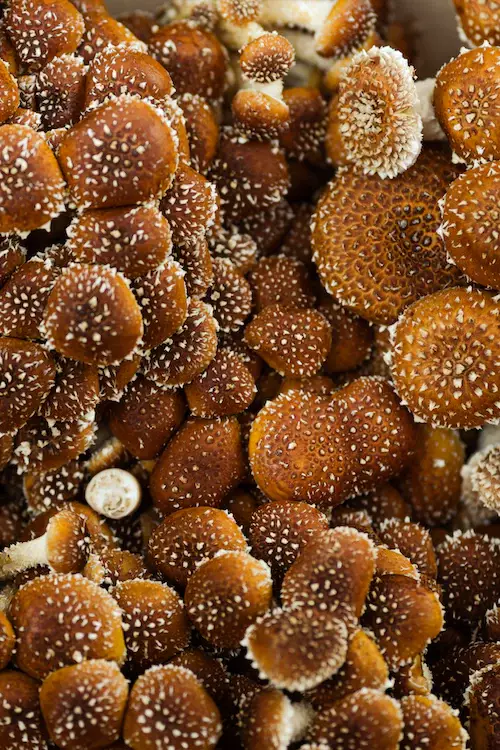
Advantages of a Home-Made Substrate Recipe
There are several advantages to making your own substrate recipe at home:
You can cut down on costs
Making your own substrate is more cost-effective than buying pre-made substrate, as materials like hardwood sawdust and wheat bran, are inexpensive and can be purchased in bulk.
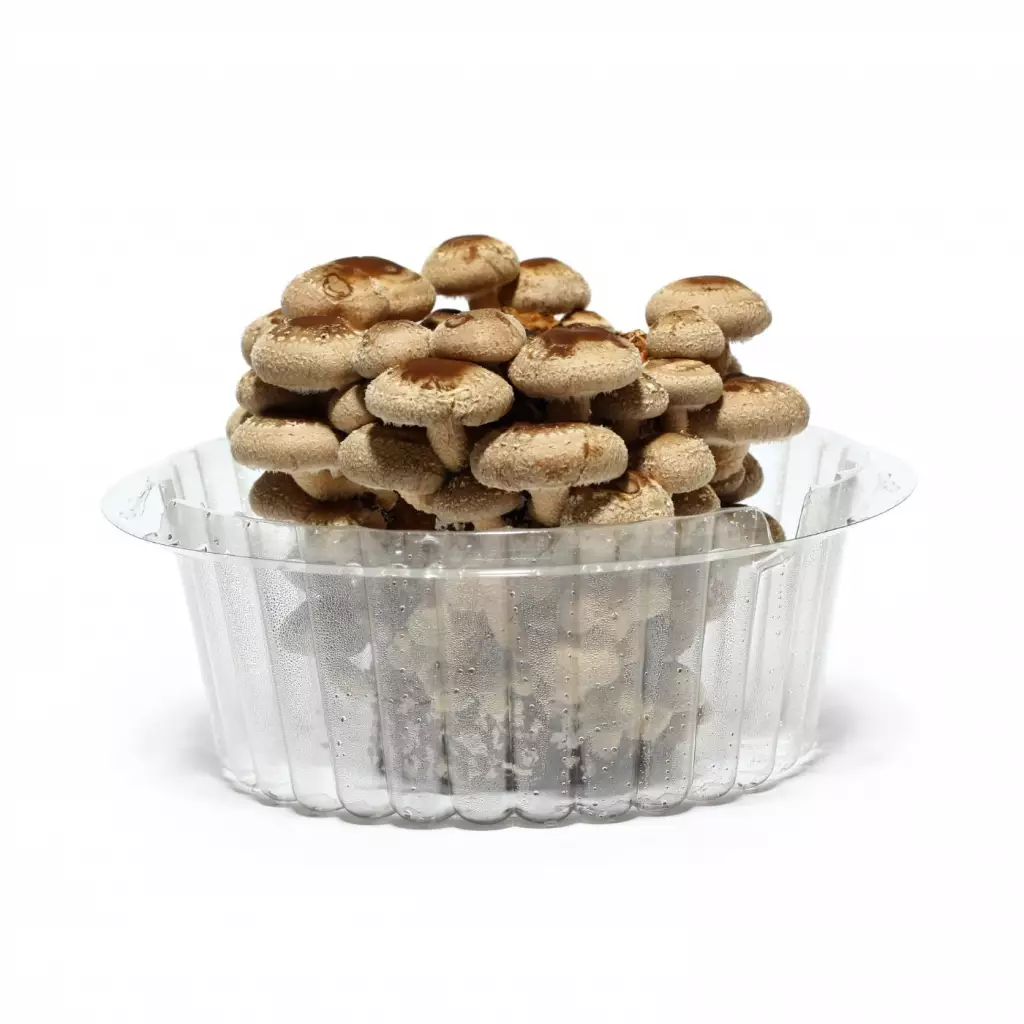
You have control over the quality of the substrate
By making your substrate, you have complete control over the ingredients. You have the assurance that they are of high quality and free from contaminants.
When you buy pre-made ones, you may not know exactly what ingredients were used or how they were prepared. This is relevant especially if you are growing mushrooms for personal consumption or to sell to others.
You can flexibly adjust your needs and preferences
You can tailor the substrate recipe to your specific needs and preferences. If you want to produce mushrooms with large caps, you might want to add gypsum. If the mixture is too acidic, you could adjust the pH by adding calcium carbonate.
You reduce reliance on commercially-produced substrates
Making your own substrate reduces the need for a commercially produced substrate. These substrates have a negative impact on the environment due to the energy and resources required for production and transportation.
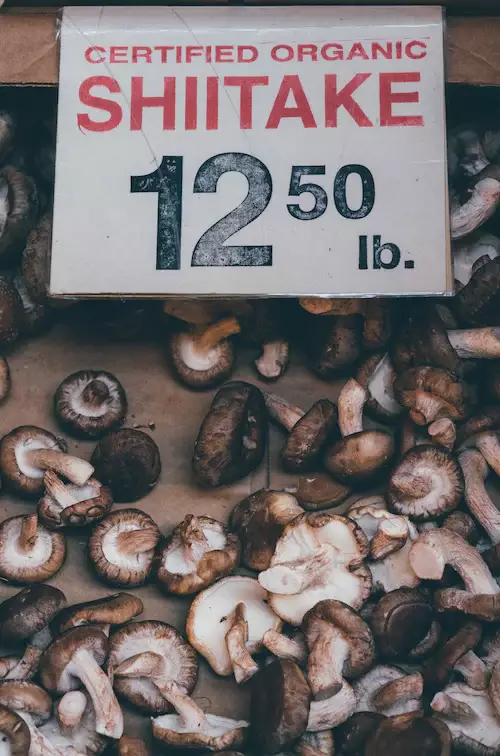
Using locally sourced ingredients is much better as it reduces your overall carbon footprint.
You can learn and have fun
Growing mushrooms from scratch can be fun and educational. The experience allows you to learn more about the science behind mushroom cultivation.
You can gain a deeper understanding of the life cycle of mushrooms, including the role of various nutrients, pH levels, and other factors in promoting healthy growth. It also allows you to experiment with different ingredients and techniques, which can be a valuable learning experience.
Whether you are a hobbyist or a professional mushroom grower, making your substrate can help you develop a deeper appreciation for the complex and fascinating world of mushroom cultivation.
Alternative Substrate Recipes For Shiitake Mushrooms
Although shiitake grows best on hardwood substrates, it can be grown on other locally-sourced substrates such as the following:
Coffee grounds are a good alternative
Instead of hardwood sawdust, you can use spent coffee grounds as a nutrient-rich substrate. To make this recipe, you'll need:
- Spent coffee grounds
- Vermiculite
- Newspaper or cardboard (optional)
- Sterilize the coffee grounds by boiling them for 30 minutes.
- Drain and let them cool.
- Mix equal parts coffee grounds and vermiculite.
- If desired, add some torn newspaper or cardboard to the mix for extra nutrition.
- Use this substrate to inoculate your shiitake mushroom spawn.
Rye grain can substitute hardwood sawdust
Another alternative is using rye grain as your substrate. You'll need:
- Rye grain
- Vermiculite
- Rinse the rye grain thoroughly.
- Soak it in water for 24 hours.
- Boil for 10-15 minutes, then drain and let it cool.
- Mix the rye grain with vermiculite (1 part grain to 2 parts vermiculite).
- Fill sterilized mason jars with the mixture and cover them with filter patch bags or breathable material.
- Inoculate with shiitake spawn and allow to colonize.
Manure and coco coir substrates are good organic alternatives
For a more natural substrate, try using a mix of manure and coco coir. You'll need:
- Manure (horse or cow)
- Coco coir
- Vermiculite
- Mix equal parts manure, coco coir, and vermiculite.
- Pasteurize the mixture by heating it at 170°F (77°C) for 1 hour.
- Once cooled, inoculate with shiitake spawn and provide a suitable environment for growth.
These alternative substrate recipes offer different options for you to experiment with in your shiitake mushroom cultivation. Remember to follow sterile procedures, maintain optimal growing conditions, and monitor your mushrooms closely for successful growth.

